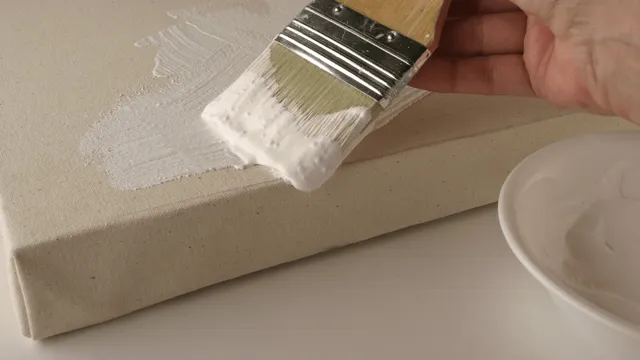Mastering the Art of Priming Canvases with Gesso: Achieving Zero Color Shift
- May 29, 2023
- 3 min read
As an artist, one of the most critical steps in creating a masterpiece is priming the canvas. Priming not only prepares the surface for painting but also affects the overall appearance and longevity of your artwork. In this blog, we'll explore the technique of priming a canvas with gesso to the color of your choice while maintaining zero color shift. Let's dive in!

Understanding the Importance of Priming:
Priming is the process of applying a preparatory layer to the canvas before painting. It serves several purposes, including creating a smooth surface, preventing paint absorption, and protecting the canvas from deterioration. Traditionally, artists have used white gesso for priming, but by tinting it to your desired color, you can add a unique touch to your artwork.
Choosing the Right Gesso:
To achieve zero color shift, it's crucial to select the appropriate gesso. Look for gesso that is labeled as "non-yellowing" or "neutral" to ensure that the color you choose remains true over time. High-quality acrylic gesso is recommended for its durability and compatibility with various painting mediums.
Preparing the Canvas:
Before applying gesso, make sure your canvas is clean and free from dust or debris. Gently wipe the surface with a soft cloth or brush to ensure a smooth working area. If your canvas has been pre-stretched, you can prime it while it's mounted on the stretcher bars. However, if you're working with unmounted canvas, it's best to stretch it first to avoid distortion.
Tinting Gesso to the Desired Color:
To tint the gesso, you can use acrylic paints or pigments. Start with a small amount of gesso in a separate container and gradually mix in the pigment until you achieve the desired color. It's recommended to use a palette knife or a dedicated brush for mixing to avoid contamination with other paints or pigments.
Applying the Tinted Gesso:
Once you have the desired color, it's time to apply the gesso to the canvas. Use a wide, flat brush or a foam roller for a smooth and even application. Start from one edge of the canvas and work your way across, applying the gesso in thin, even layers. Avoid applying it too thickly, as it may crack or cause the canvas to warp.
Allowing the Gesso to Dry:
After applying the first layer of tinted gesso, allow it to dry completely. The drying time may vary depending on the brand and thickness of the gesso. It's important to be patient and let each layer dry thoroughly before applying additional coats. For optimal results, it's recommended to apply at least two to three layers of gesso, allowing each layer to dry before proceeding.
Benefits of Zero Color Shift:
By priming your canvas with gesso to the color of your choice while maintaining zero color shift, you have greater control over the overall appearance of your artwork. This technique allows you to set the tone, atmosphere, or mood right from the start, providing a solid foundation for your creative vision.
Conclusion: Priming a canvas with gesso to the color of your choice with zero color shift is a simple yet powerful technique that every artist should master. By selecting the right gesso, preparing the canvas properly, and applying the tinted gesso in thin, even layers, you can achieve a flawless foundation for your artwork. Experiment with different colors to unleash your creativity and create visually stunning pieces that truly stand out. Happy painting! Shop for Gesso HERE.
#PrimingCanvases #GessoTechnique #CanvasPreparation #ZeroColorShift #TintingGesso #ChoosingGesso #AcrylicGesso #CanvasPriming #PaintingPreparation #ArtFoundations #ColorControl #PaintingSurface #CanvasGessoing #ArtTechniques #PaintingTips #GessoApplication #ArtisticProcess #CreativeFoundations #GessoTinting #PaintingEssentials #CanvasPreparationTips #ColorConsistency #PaintingFundamentals #GessoLayering #ArtSupplies #DurablePriming #ArtisticBase #PaintingMedium #ProfessionalPriming #ColorManipulation












Comments